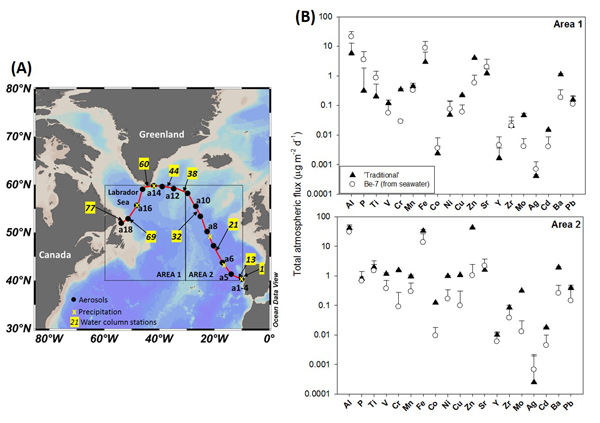Estimation of the trace element deposition fluxes to the Atlantic Ocean using two different methods
Shelley and co-workers (2016, see reference below) established that atmospheric deposition of trace elements was low throughout May-June 2014 along the GEOVIDE (GA01) cruise track in the North Atlantic Ocean. They also demonstrate that the aerosol trace element composition could be represented as simply the mixing of two aerosol sources: mineral dust and mixed mineral dust-sea salt-anthropogenic aerosols. In other words, the aerosols were not significantly affected by the Saharan dust plume in this northern part of the Atlantic Ocean.
Converting the trace element concentrations into an atmospheric deposition flux is a known challenge. Here, the authors discuss the comparison of fluxes obtained using the “traditional” methods (i.e. summing dry and wet deposition) and the 7Be content of the upper water column as a proxy for atmospheric deposition. Excellent agreement is obtained for ca 50% of the trace elements, among them iron, silver, strontium, yttrium, and in both studied areas (see figure below). Hypotheses for observed discrepancies could be differences in the timescale of integration of processes and selection of representative deposition velocities and precipitation rates.

Reference:
Shelley, R. U., Roca-Martí, M., Castrillejo, M., Sanial, V., Masqué, P., Landing, W. M., van Beek, P., Planquette, H., & Sarthou, G. (2016). Quantification of trace element atmospheric deposition fluxes to the Atlantic Ocean (>40°N; GEOVIDE, GEOTRACES GA01) during spring 2014. Deep Sea Research Part I: Oceanographic Research Papers. DOI: 10.1016/j.dsr.2016.11.010
